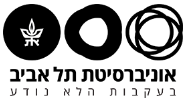סמינר מיוחד בפיזיקה של מערכות ביולוגיות וחומרים רכים: Self-assembling peptides and the QTY code for protein design
Shuguang Zhang, MIT
-
Self-assembling peptide scaffolds can be traced back to the fundamental discoveries made in 1951 by Linus Pauling and his colleagues, who reported the molecular structures of the most fundamental motifs of proteins, namely the alpha-helix and the β-sheet. These secondary structures are the molecular basis of most self-assembling peptide nanofiber scaffolds. In 1990 a serendipitous discovery of an ionic self-complementary peptide with a repeating unit in the yeast protein Zuotin, launched peptides as well-defined materials. Since then, peptide nanofiber scaffold hydrogel soft materials have been used as 3D scaffolds for the serum-free culture of animal tissue and stem cells, for reparative and regenerative medicine, for accelerated wound healing and in surgical applications and sustained molecular release.
-
Ever since proteins were discovered, proteins have been classified into two chemically distinct classes: I) the hydrophilic class proteins including most cytosol enzymes, growth factors, transcription factors and other DNA and RNA binding proteins; and II) the hydrophobic class integral transmembrane proteins including membrane transporters, ion channels, G protein-coupled receptors (GPCRs) and photosynthesis systems. These two chemically distinct classes of proteins have been believed to be totally immutable, namely, the hydrophobic membrane proteins cannot be converted into hydrophilic water-soluble proteins and vice versa. Such classification has been taken for granted. Shuguang Zhang conceived a simple QTY code that removes the boundaries of these chemical distinctions. Zhang’s QTY code is elegant in its simplicity. Zhang used the QTY code to systematically replaced over 50% amino acids L (Lue), I (Ile), V (Val), F (Phe) in transmembrane domain with amino acids Q (Gln), T (Thr), Y (Tyr). Zhang demonstrated experimentally that the hydrophilic QTY analog proteins not only retain their structural stability, but they also retained their functional activities of chemokine and cytokines receptors and histidine kinase’s four enzymatic activities. Zhang’s team showed experimentally that the reverse QTY code (rQTY) can convert a hydrophilic human serum albumin into self-assembled and well-defined protein nanoparticles. Zhang’s elegant QTY code erases the boundary of two chemically distinct classes of hydrophilic and hydrophobic proteins.


